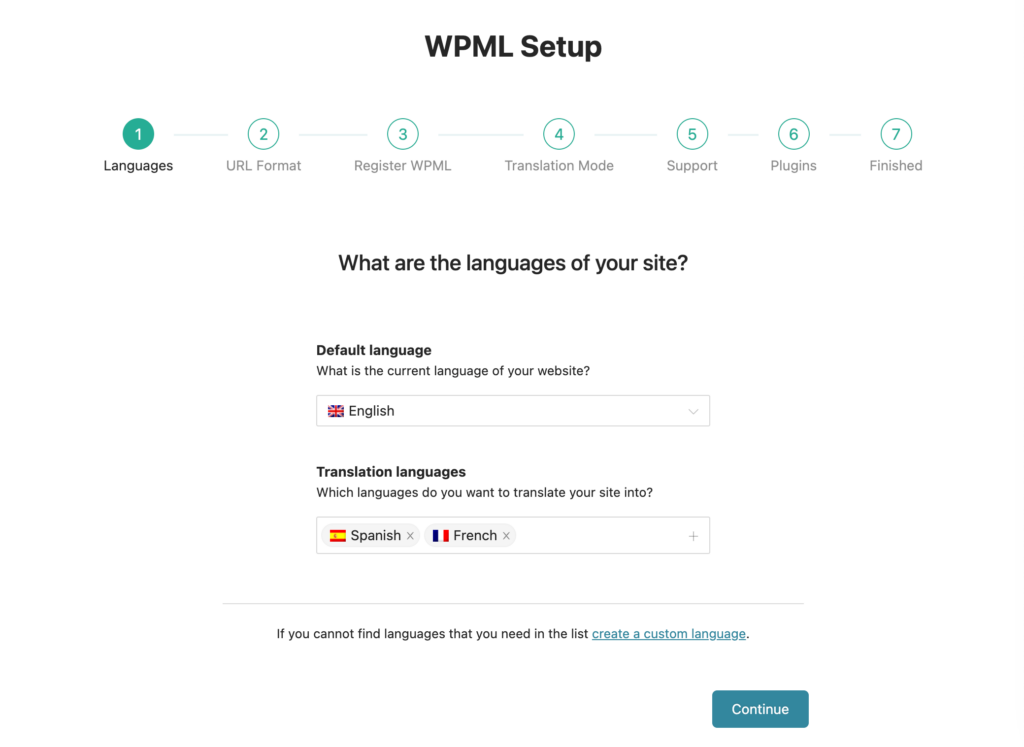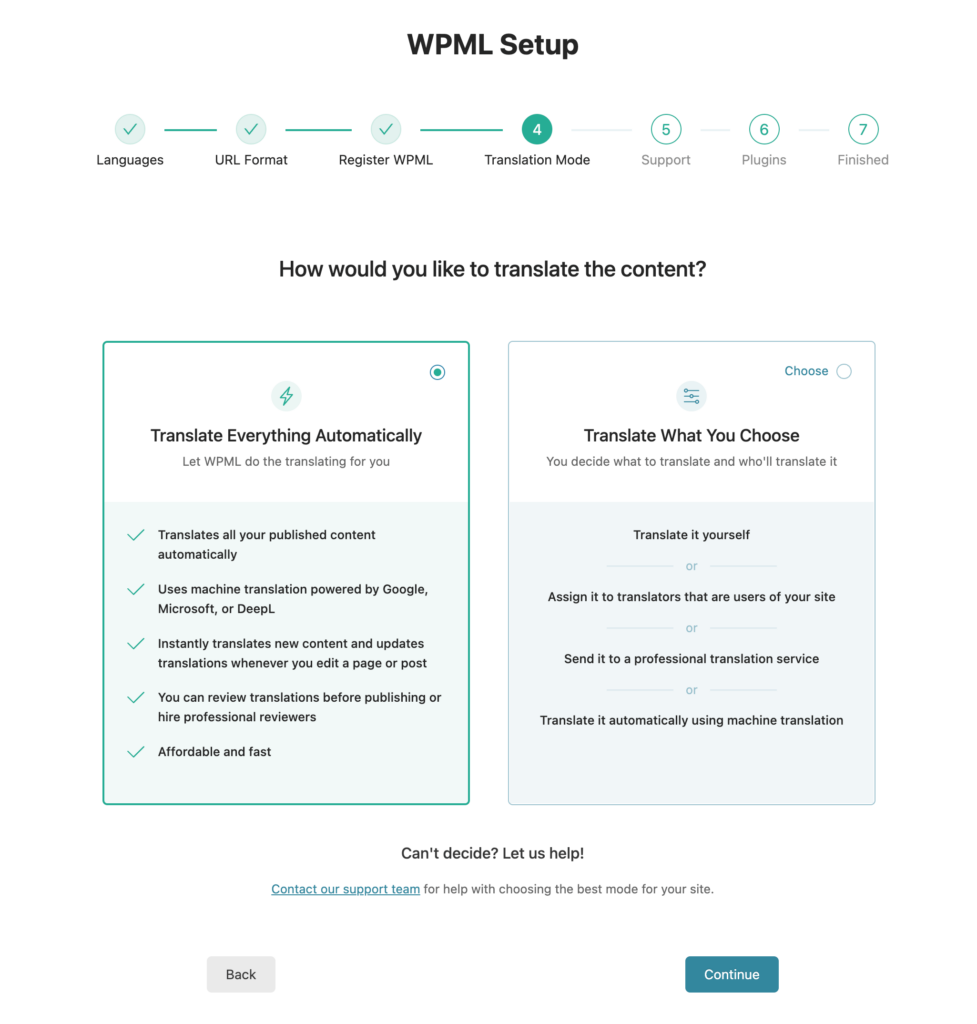The way we use the internet has been constantly evolving over the years, with even more significant changes in recent times. In the past couple of years, the pandemic notably prompted businesses to adapt by shifting toward the online sphere, using online means to stay connected with their customers and reach a broader audience. This transition has had a compelling impact on the management and operation of websites.
For one, the online expansion to serve a broader audience base requires websites to accommodate diverse linguistic preferences. To ensure that their online presence is not limited by language barriers, the utilization of multi-language translation features is imperative.
A company that understands the significance of this well is OnTheGoSystems (OTGS).
OTGS is the creator of WPML, which stands for “WordPress Multilingual Plugin.” As the name implies, WPML is a WordPress-specific plugin that facilitates the auto-translation of website content. Born from the founder’s struggle to build multilingual websites in the past, the company has since enhanced the plugin’s capabilities to address a broader scope of use cases, with a new project on the horizon.
In a recent interview with KrASIA, Dean Jones, partnerships marketing manager at OTGS, sheds light on the capabilities of the WPML plugin, how it has developed over the years, and what plans OTGS has in its pipeline for 2024.
The following interview has been edited and consolidated for brevity and clarity.
KrASIA (KR): What’s OnTheGoSystems and what problems does it aim to solve?
Dean Jones (DJ): OnTheGoSystems is a fully remote software company specializing in translation-related technologies. It started by providing online translation services to various types of clients and later found a gap in the market for a WordPress translation plugin.
In the early days of WordPress, the platform was not as robust as it is today, and having a multilingual website posed challenges. Our founder Amir Hezler explains it nicely: “I got into WordPress by chance, because I needed a website for a project that I was building at the time. I realized back then that building a multilingual website with WordPress was not a simple task, and so the WPML project was born.”
WPML has since become the company’s main area of focus along with the underlying technologies that power it. These technologies have now opened up new avenues to solve issues beyond the scope of WordPress. Where our WPML project provides useful translation solutions for WordPress users through a plugin, our new Private Translation Cloud (PTC) project uses similar technologies but allows developers to translate their software projects.
In both cases, we aim to enable our clients to create multilingual projects in a seamless, cost-effective way, thus giving them opportunities to compete in global markets and provide their users with the best experience of their content, products and services.

KR: How does the WPML auto-translation software work?
DJ: It is important to note that using WordPress (in its current form) for building websites means you can only have your content displayed in one primary language. This is how the native WordPress content editor was built. To have a site that contains content translated into multiple languages, you will need a third-party plugin to facilitate this.
WPML, our plugin, extends the WordPress content editor by enabling you to easily create your secondary language content and connect it back to the primary language content. On the frontend of the website, viewers can toggle between languages using a language switcher while, on the backend, your translations are stored in the WordPress database. These are easily accessible through the WPML translation editor in case you want to add, edit or maintain the translations.
This setup allows for translations to be implemented in various ways. You can have a human add translations “manually,” but you can also utilize our automatic translation features to generate translations for you. If you choose to use this automatic translation, all you need to do is specify to WPML what content you want to translate, and, within a few clicks, our plugin will send the content through a translation engine of your choice—such as DeepL, Google, and Microsoft—which handles the bulk of the translation, before sending it back to our servers where some final processing is done to ensure that the quality of the translations are as good as possible.
You can choose if you want the translated content to be published immediately or if you would like to review it before it is published on your site. It’s as simple as that.

KR: Are there scenarios where the software is less able to produce consistent, high-quality results? What’s the main cause?
DJ: This is a good question and an important one. When people explain to us that they are skeptical or nervous about using automatic translations for web content, the main concern is usually related to the quality and accuracy of translations. As we know, automatic translations are not totally perfect, but they can get pretty close to “human level” depending on a number of factors:
- Ambiguity of content in primary language: It is important to write content in the primary language that is clear and unconfusing to an artificial intelligence-based translation engine. Writing content that contains ambiguous language could result in translations that are inaccurate or out of context.
- Technologies of supported translation engines: Most automatic translation services run through DeepL, Google, or Microsoft. So, we are largely dependent on the technological developments of these third parties. Luckily, all of them are already very good and widely used. Use the engine that is most suitable to your needs and set your expectations accordingly.
- Additional processing of translations: We have developed our own machine learning models that improve on the automatic translations provided by the abovementioned engines. When our clients receive translations, they have already gone through additional processing to aid with accuracy and general quality.
- Glossary and saved terms: The engines above don’t allow you to save certain words that you might want to be translated in a certain way. This could cause frustrations. For example, if you manage content for the automaker Jaguar, you probably don’t want to have that word translated at all because, in this context, it is referencing the brand name and not the animal. Without a mechanism to tell the engine how to handle that term, it will just translate it as it sees fit, which means a lot of additional correction work is needed. We’ve included a ‘glossary’ mechanism in our solution that enables you to save certain terms that should be translated in a specific way, or not translated at all. This will be saved and applied to all future translations for that project.
KR: Is your software compatible with platforms other than WordPress?
DJ: WPML is not compatible with other content management systems, it is specific to WordPress. The WordPress platform functions in a specific way, and we developed WPML to work as well as possible within that framework (which is largely PHP- and Javascript-based). With this kind of focus, we’ve been able to keep WPML as a market-leading plugin within the WordPress niche for over a decade and we’d never compromise this position by overextending on the project.
However, given our years of experience in this project as well as other major developments, we are now branching outside of the WordPress niche with our new PTC project. This project has an entirely new team that can focus on the specific goals of the project which is to provide “better-than-human” translations to developers who want to translate their software applications for global audiences. For the first time, our WPML technologies will be useful in other contexts.
KR: What plans does the company have in Asia this year?
DJ: From early last year, we started putting significant attention into the Southeast Asian market. Given the radical situations that Asian businesses found themselves in during the Covid-19 pandemic, we noticed the increased need for Asian businesses to maintain and cultivate relationships with Western clients.
Businesses can no longer rely solely on trade shows and in-person events to succeed—they need to be well prepared with their online presence to ensure that they can continue running their operations in spite of any unforeseen external circumstances. With this in mind, we initially did some research into the Chinese market, but we hit a few stumbling blocks especially given that WordPress is not yet popular enough in the region and most prefer to use existing Chinese-made technologies. So, we shifted our focus back to other territories that already know WordPress and have a strong need for reaching a global audience.
Our goal for this year is to work with various types of partners, such as hosting companies, bloggers, and developers, to educate local audiences in these territories about the benefits of WordPress and the advantages of having multilingual content. As part of these efforts, we will be attending WordCamp Asia 2024 in Taipei to network with the local community and work toward these goals. We already have WPML clients in Taiwan, Japan, Malaysia, Vietnam, Thailand, and more that use our software to promote their businesses to international audiences, and we’d love to be able to help even more.


